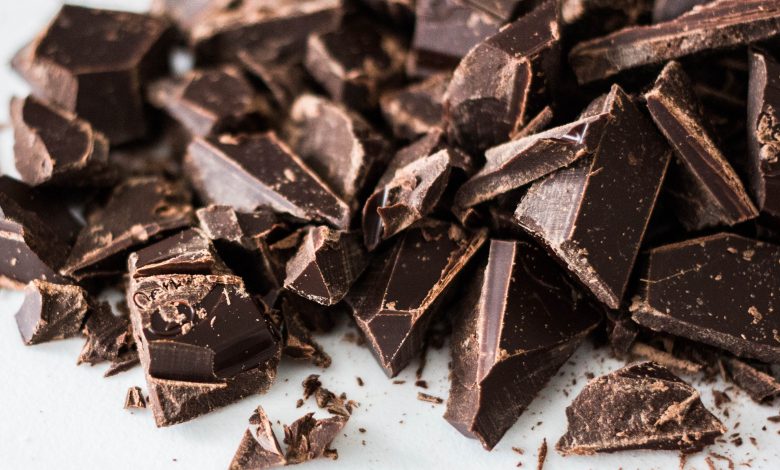
The Real Nutritional & Weight Loss Value of Chocolate
When you were a kid, your mom probably scolded you for over-indulging in chocolates, warning you of how it would ruin your teeth. When you grew up and finally thought you could have all the chocolate you want with no one to tell you ‘No,’ friends and colleagues came along to tell you that chocolate would do you no good- too sugary, too full of calories as it is. If you have resigned yourself to relegating your craving for the chocolate to the backburner for all eternity, maybe all hope is not lost yet! There is quite a good case for chocolate that should allow you to indulge in this awesome treat with no guilt. However, you need to ensure that you understand which kind is good and why.
A Quick History of Chocolate
The history of chocolate dates back some 4,000 years ago. The first chocolate was made perhaps in Central America, where the Theobroma Cacao trees from which we get cocoa thrive in the tropical weather. It was much later, in the 19th century, that chocolate bars first made an appearance. By the 20th century, chocolate had become a favorite food for millions across the world, with production and demand both growing tremendously.
Be it the regular kind, white chocolate, or dark chocolate, this particular foodstuff has a fan base that reaches across borders, age groups, gender, and lifestyle. Whether it is a gift for a loved one or a child, a way to make up for a mistake or profess love, you are indulging in it to pamper yourself, or you are celebrating something, chocolates are today a part of life for everyone.

Different Types of Chocolates
When it comes to chocolate, preferences can vary quite dramatically. Some people like the regular kind, while others only have the dark variety, while still others swear by white chocolate. What’s the similarity, and what’s the difference between the three? Knowing this helps you make the right nutrition decision when you are grabbing a bar of chocolate.
The similarity lies in the fact that all three varieties are made from the beans of the Theobroma cacao tree, the cacao beans, that is. The pod of the tree is harvested, and the beans are removed from the pods and then fermented and dried. Once dry, the beans are roasted evenly and then ground into a fine powder. This powder is the base of the chocolate that is later processed by converting it into liquor, adding sweeteners to it, grinding once more, and finally making it in the form of chocolate bars of different kinds.
While the overall process is similar for all kinds of chocolate, there is some variation during the processing. Milk chocolate or the regular kind takes cocoa liquor and sugar but also milk powder. For dark chocolate, no milk powder is used.
In the U.S., milk chocolate has to contain at least 10% cocoa content, so a substantial addition of milk powder is possible with regular or milk chocolate-powdered milk. For dark chocolate, the proportion of cocoa powder used may be even as high as 85%, with the percentage starting at 35. When the dark chocolate has high cocoa content, it is darker and more bitter- a very unusual taste indeed. Their ingredients are as follows:
Dark chocolate:
- Between 40 to 85% cocoa solids
- Cocoa butter
- Sugar
Milk chocolate:
- 10- 40% cocoa solids
- Cocoa butter
- Sugar
- Milk (in any form)
- Butterfat (may be added)
- Vegetable oil (may be added)
- Artificial flavor (may be added)
White chocolate:
- Cocoa butter
- Sugar
- Milk
As you can see, white chocolate contains no cocoa solids at all, but it does have cocoa butter, which also comes from the Theobroma Cacao tree’s beans.

So is Chocolate Healthy or Not?
Well, studies do show that chocolate can have a beneficial effect in clearing out toxins in your body, satiating your hunger, improving blood circulation, and in many other ways. This NCBI report mentions how both food and drink made from the beans of Theobroma cacao were used in earlier times for its medicinal properties. According to this report, there are documented records indicating more than 100 ways in which the cocoa beans could be used for medicinal purposes.
According to an article published on the Harvard School of Public Health website, chocolate does have health benefits to offer. This report says that chocolate can help promote cardiovascular health, regulate blood pressure, reduce the risk of diabetes, and help count towards the daily requirement of many essential nutrients that we need on a regular basis.
What Kind of Chocolate is Healthy, and What Makes it So?
The important thing to know and understand here is that all kinds of chocolate do not offer the same health benefits. The benefits mainly arise from the presence of certain substances in cocoa, so that pretty much takes white chocolate out of the running right at the beginning. Regular chocolate has less of the cocoa component in it and thus offers less health benefits, but dark chocolate does give you a host of benefits that make it a good addition to your after-dinner munching menu. Keep in mind here that you need to check the cocoa content in chocolate before you buy it, be it the milk or dark variant.
Dark chocolate, especially the bitter variety with a high percentage of cocoa in it, is the best when it comes to health benefits. White chocolate has no cocoa solids, but it does have a lot of sugar and milk powder, so it could be quite bad for you if you are trying to cut down on empty calories. Regular milk chocolate, too, if it has too little cocoa and more milk powder and sugar, does not do much good for you. Again, with regular chocolate, the higher the cocoa, the more likely it is to be good for your body.
To give you the exact numbers, an ounce of dark chocolate (85% cocoa) has 14 g of fat, 136 calories, 2 g of fiber, 12 grams of carbs, and a gram of protein.
Is Weight Loss with Chocolate a Myth?
While binging on chocolate is likely to have a weight gain effect, taking a piece of dark chocolate, especially the unsweetened kind, when you are feeling hungry in between meals, can help with weight control quite admirably. The fact is that dark chocolate promotes a feeling of satiation that lasts a while, so if you pop a piece when you are feeling like reaching for that packet of chips, you can avoid that temptation and stay-off snacks until your next square meal. For most overweight people, the biggest culprit behind weight gain is uncontrollable snacking in between meals. Dark chocolate can help curb this habit in a pleasant way by letting you munch on something you like that can also take the edge off your hunger pangs. Since you are indulging in something that you LIKE the taste of, you avoid the urge to binge on junk food, adding a psychological restraint on yourself as well.
But that is not all. Studies also show that weight control and weight loss depends a lot on the diversity of the microbes that flourish in the gut. Interestingly, when you allow the good bacteria to populate your gut, you tend to be healthier but slimmer, your digestion is better, and you get more benefit from the nutritious food you eat. So it’s a win-win situation all through. The polyphenols in cocoa do the job of helping the gut bacteria thrive rather efficiently. Do note that it is the flavonoids in cocoa that help here, so the more cocoa content your dark chocolate has, the better it is for your gut health and your weight-reduction plan. The bottom line is your gut loves dark chocolate.

General Health Benefits of Dark Chocolate
Apart from the fact that a piece of chocolate may make your taste buds jump with joy, there are good reasons for you to stop feeling guilty when you are eating chocolate, the dark variety, in strict moderation. Here are a few ways in which it can promote better health:
It has many essential minerals.
Cocoa contains several minerals that are beneficial to us and that you are recommended to get a daily dose of. To start with, it has magnesium – about 36 mg in a 100-kcal serving size. Magnesium helps in protein synthesis and energy production, which is why you feel more active after downing a piece of dark chocolate- even the unsweetened kind. It also aids in muscle relaxation, which might make it a good idea to pop a little piece of dark chocolate after you have had a particularly tiring workout session.
Copper is another mineral that dark chocolate contains. We need copper for the transport of iron through the body, for brain development, and also to metabolize glucose. Again, you can see the connection with energy production here. Our body needs copper for proper cardiovascular functioning as well. Potassium in dark chocolate helps safeguard against hypertension, and it also contains iron, one of the most commonly missed nutrients in our regular diet. The Manganese in dark chocolate is excellent for your skin, as it promotes the production of an essential protein that keeps your skin elastic, soft, and glowing with health. This protein, collagen, also ensures that you do not age prematurely. Dark chocolate also has calcium, which aids in the repair of skin cells every day. So dark chocolate is a beauty aid in a way.
It is a good source of flavonoids.
One of the most significant health benefits of chocolate comes from the presence of polyphenolic compounds known as flavonoids. Chocolate is quite rich in these, especially flavonols or flavan-3-ols. Dark chocolate may contain almost five times as much flavonols as regular milk chocolate.
Studies show that dark chocolate contains many more polyphenols and flavonols than even berries like acai or blueberries that are highly recommended for their anti-oxidant content.
Now, why do you need flavonols? Well, they are very useful antioxidants that help improve your heart health and reduce your risk of heart disease. They promote the production of Nitric Oxide in the cell lining of blood vessels and thus relax the blood vessels, encouraging better blood flow through your system. Dark chocolate may, as a result, help in keeping your blood pressure regulated.
Flavonols are also believed to increase insulin sensitivity, and in the long run, this means you may be at a lowered risk of diabetes if you are in the habit of eating the right amount of dark chocolate regularly.
Dark chocolate, or rather the flavonols in dark chocolate, may also be good for skin health since they improve blood circulation to the skin, enhance skin density, and keep skin hydrated better. Most of all, flavonols can protect your skin against the harsh rays of the sun.
It reduces the risk of heart disease.
Cocoa powder decreases oxidized LDL and improves HDL cholesterol. It is the oxidized LDL that can cause harm to the lining of the arteries, putting you at risk of heart ailments. The antioxidants in cocoa enter the bloodstream and safeguard lipoproteins from oxidative damage. When the chocolate reduces the oxidized LDL in your body, it also reduces the risk of damage to the artery lining.
Studies have also indicated that dark chocolate can reduce the possibility of calcified plaque buildup in the arteries. This is another way in which chocolate can reduce the risk of heart disease.
It improves brain function.
Perhaps one of the most impressive benefits of chocolate is that it might boost your brain function. High cocoa content dark chocolate improves blood circulation, and this ensures that your brain has better blood flow, which, in turn, improves brain function. In fact, in elderly people who suffer from cognitive impairment, having dark chocolate regularly can enhance cognitive function. It is also seen to have a positive effect on verbal fluency. According to a report published in Medical News Today, Harvard scientists suggest that two cups of chocolate every day can help improve brain health and also slow down cognitive impairment in the elderly. An NCBI report suggests that a specific cocoa extract may actually safeguard nerve pathways from further damage in those afflicted with Alzheimer’s. An American Academy of Neurology article backs up these facts with the conclusion that both the cognitive function, as well as neurovascular coupling, can be improved in those exhibiting baseline affliction in these aspects by the consumption of cocoa on a regular basis.
Since chocolate contains both caffeine and theobromine, ingesting dark chocolate has an immediate positive effect on brain function from these two substances, although this effect may last for just a short while. Another reason why you feel happy and energetic after you eat chocolate loaded with cocoa is that it has phenylethylamine, which promotes the release of feel-good endorphins in your brain.
Although not quite the same, cocoa may also help with alleviating symptoms of depression. This is again thanks to the flavanols in cocoa that convert tryptophan into serotonin, which helps with mood stabilization. The caffeine also adds to the mood booster effect of dark chocolate that contains a higher percentage of cocoa. A cup of hot chocolate is not known as the panacea for blues just like that; it does promote calmness and a general sense of well-being.
It improves glucose metabolization.
It doesn’t sound likely at all that something like chocolate can help you manage diabetes, even prevent it, but studies show that this is quite true. The cocoa in chocolate enhances the body’s ability to metabolize glucose. Flavonoids curb oxidative stress, which is believed to be the primary cause of the body developing insulin resistance. Cocoa makes your body more sensitive to insulin, and so it reduces your risk of type 2 diabetes that is characterized by soaring blood sugar levels.

With so many benefits to offer, it is clear that you need not fear adding chocolate to your diet plan, although you must do so in moderation. What you do need to focus on is the kind of chocolate you choose. Since the benefits of chocolate come from the cocoa content, it is evident that you want to pick the chocolate type with the maximum cocoa. Even in dark chocolate varieties, you get variants with different percentages of cocoa, so look at the packaging carefully and pick the one with the highest percentage. If you can, choose the unsweetened dark chocolate varieties to avoid the unnecessary addition of sugar. Ideally, you want to choose chocolate that has over 70% of cocoa content to enjoy the health benefits. So go ahead and browse through those very tempting rows upon rows of yummy chocolate in your neighborhood supermarket, and find the right kind so that you can eat your favorite chocolate without guilt!



